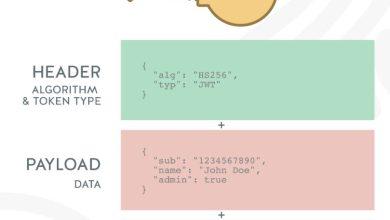
Welcome to our guide to mastering Azure Table Storage! In this article, we will explore the benefits and features of this cloud storage service offered by Microsoft Azure. Azure Table Storage is a scalable NoSQL database that serves as a key-value store, making it an excellent choice for organizations dealing with large amounts of structured data. Whether you are a developer, IT professional, or business owner, Azure Table Storage can help you quickly and efficiently manage your data in the cloud.
Key Takeaways
- Azure Table Storage is a cloud storage service offered by Microsoft Azure
- It is a scalable NoSQL database that serves as a key-value store
- Azure Table Storage is excellent for managing large amounts of structured data
Understanding Azure Table Storage: Key Features and Benefits
Azure Table Storage, offered by Microsoft Azure, is a highly scalable, NoSQL database and key-value store. It serves as a distributed database system, providing users with an efficient and reliable data storage solution.
The key features of Azure Table Storage include:
| Feature | Description |
|---|---|
| Scalability | Azure Table Storage can handle vast amounts of structured data, allowing users to easily scale up or down as needed. |
| Ease of use | The storage service is easy to use and requires minimal setup, making it an ideal choice for developers and businesses of all sizes. |
| Cost-effectiveness | It provides an affordable and cost-effective data storage solution, with no upfront costs or termination fees. |
| Reliability | Azure Table Storage is highly reliable and offers multiple layers of redundancy to ensure that data is always available. |
Azure Table Storage is a distributed database system that allows users to store data in tables, which can be partitioned for increased performance. The storage service is designed to support massive amounts of data and can be easily integrated with other Microsoft Azure services, such as Azure Functions and Azure Cosmos DB.
Whether you’re managing small amounts of data or large, complex data sets, Azure Table Storage provides the flexibility, scalability, and performance needed to ensure that your data is always accessible and secure.
Azure Table Storage: Data Management and Security
When it comes to efficient data management, Azure Table Storage is a powerful cloud storage service offered by Microsoft Azure. However, to ensure the security and accessibility of your data, effective management practices are crucial. In this section, we’ll discuss best practices for data management and security within Azure Table Storage.
Organization and Structuring
Organizing your data within Azure Table Storage involves creating tables, entities, and properties. Tables are used to group related entities, and each entity is created with a unique key that allows you to retrieve data quickly and efficiently. Additionally, defining and implementing a structure for your entities will help improve data integrity and simplify queries.
Data Security
Securing your data in Azure Table Storage involves implementing access controls that limit who can access, modify or delete your data. This could include setting permissions for specific users, groups or roles, as well as using shared access signatures or encryption to protect your data at rest or in transit.
Backups and Recovery
To ensure that your data remains accessible and protected, it’s vital to have a backup and recovery strategy in place. Azure provides various options for data backup and recovery, including point-in-time restores and geo-redundancy.
By following best practices for data management and security, you can ensure the integrity, accessibility, and security of your data in Azure Table Storage. With these measures in place, you can leverage the full power of this cloud storage service for your business needs.
Azure Table Storage: Data Retrieval Tips and Techniques
Retrieving data from Azure Table Storage is a vital aspect of using this cloud storage service effectively. Below are some tips and techniques to optimize data retrieval performance.
1. Use Appropriate Query Techniques
Azure Table Storage supports various query techniques that allow you to filter, project, and order the data retrieved. Using these techniques can significantly improve the performance of your data retrieval operations. For example, you can use the $filter query parameter to filter data based on specific conditions such as partition key or timestamp. Similarly, you can use the $select query parameter to retrieve only the required columns, reducing the amount of data transferred over the network.
2. Implement Caching
Implementing caching can help reduce the number of requests made to Azure Table Storage, thereby improving the overall performance of your application. You can use a cache provider such as Azure Cache for Redis to cache frequently accessed data. This can significantly reduce the latency of data retrieval operations.
3. Optimize the Partition Key
The partition key plays a crucial role in determining the scalability and performance of your Azure Table Storage account. It is essential to design an effective partition key strategy that distributes the data evenly across partitions. This can help minimize the number of requests made to each partition, reducing latency and improving overall performance.
By following these tips and techniques, you can effectively retrieve data from Azure Table Storage. Implementing these best practices can help you optimize your data retrieval performance, improve scalability, and ensure efficient use of this cloud storage service.
Scaling and Partitioning in Azure Table Storage
Azure Table Storage provides automatic load balancing and scalable throughput capabilities to handle large volumes of data. However, as the amount of stored data increases, it becomes important to partition your data to avoid performance issues.
Partitioning in Azure Table Storage
Partitioning enables you to horizontally scale your Azure Table Storage account, distribute data across multiple servers, and improve performance. By dividing your data into smaller partitions, you can avoid hot-spots and spread the load across multiple servers.
When partitioning your data, it’s important to choose the right partition key. This key should be based on a property that evenly distributes data across partitions. Common partition keys include customer ID, location, category, or date. By selecting a partition key that distributes data evenly, you can improve query performance and throughput.
Implementing an Effective Partitioning Strategy
There are several things to consider when implementing a partitioning strategy in Azure Table Storage:
- Partition Size: Each partition can contain up to 100 terabytes of data. However, for optimal performance, it’s recommended to keep partitions between 10 and 100 gigabytes.
- Partition Key: As mentioned earlier, selecting the right partition key is critical for even distribution of data across partitions.
- Data Access Patterns: Understanding how your data will be accessed can help you design an effective partitioning strategy. For example, if you frequently query data based on a specific date range, you may want to partition your data by date.
- Scalability: When designing your partitioning strategy, consider the potential for future growth. Your strategy should allow for easy scaling and the ability to add new partitions as needed.
Implementing an effective partitioning strategy can significantly improve the performance and scalability of your Azure Table Storage account. By distributing data across multiple partitions, you can avoid performance bottlenecks and ensure that your application can handle large volumes of data.
Azure Table Storage: Your Ultimate Cloud Storage Solution
If you’re looking for a scalable NoSQL database that doubles as a key-value store, look no further than Azure Table Storage – one of Microsoft Azure’s most powerful cloud storage services. With Azure Table Storage, you can easily manage large volumes of structured data and enjoy seamless data retrieval with minimal latency.
Unleash the Power of Azure Table Storage with These Key Features and Benefits
Azure Table Storage is a distributed database that’s designed to provide seamless data storage and management. Some of its key features and benefits include:
- Data Storage Solution: With Azure Table Storage, you can easily store and manage large volumes of structured data, including non-relational data such as log files and IoT device data.
- Distributed Database: Azure Table Storage is designed to be a globally distributed database, making it easy to replicate data across regions and ensure high availability and fault tolerance.
- Scalable: Azure Table Storage is built for scalability; you can easily adjust the capacity of your table as your data needs grow.
Secure and Manage Your Data with Azure Table Storage
Effective data management and security are vital to ensuring the reliability and integrity of your data. With Azure Table Storage, you can manage and secure your data with ease. Here are some tips for effective data management:
- Organize Your Data: To make data retrieval more efficient, organize your data into logical partitions. This will ensure faster data retrieval and reduce query costs.
- Implement Data Security: Azure Table Storage provides various security options, including encryption at rest and in transit. It’s important to implement appropriate security measures to protect your data.
- Back Up Your Data: Azure Table Storage provides backup and restore options to help you recover data in case of accidental deletion or corruption. Always back up your data regularly to avoid data loss.
Retrieving Data from Azure Table Storage Efficiently
Retrieving data from Azure Table Storage can be a daunting task, especially if you have large volumes of data. To optimize data retrieval performance, consider the following tips and techniques:
- Use Appropriate Query Patterns: When querying data, use appropriate query patterns that match your data access patterns. This can significantly improve data retrieval performance.
- Limit Query Results: Always limit query results to the minimum required for your application. This will reduce query time and improve application performance.
- Cache Frequently Accessed Data: Cache frequently accessed data to reduce the number of queries and improve application performance.
Scale and Partition Your Data for Optimal Performance
Azure Table Storage supports scaling and partitioning to help you manage large volumes of data and minimize latency. Here are some tips on how to scale and partition your data:
- Choose the Right Partition Key: The partition key is critical to ensuring efficient data retrieval. Choose a partition key that’s evenly distributed and provides a high level of granularity.
- Partition Your Data: Partition your data based on access patterns and query requirements. This will ensure faster data retrieval and reduce query costs.
- Monitor Your Table: Regularly monitor your table to identify performance bottlenecks and adjust partitioning strategies as needed.
In Conclusion
Azure Table Storage is a powerful cloud storage service that can help you manage large volumes of structured data with ease. Whether you’re looking for a scalable NoSQL database or a key-value store, Azure Table Storage has got you covered. With its key features and benefits, you can secure and manage your data, retrieve data efficiently, and scale and partition your data for optimal performance. Start leveraging the power of Azure Table Storage today!
FAQ
Q: What is Azure Table Storage?
A: Azure Table Storage is a cloud storage service offered by Microsoft Azure. It is a scalable NoSQL database and a key-value store.
Q: What are the key features of Azure Table Storage?
A: Azure Table Storage provides a distributed database solution for storing large amounts of structured data. It is highly scalable, offers high-performance querying, and supports automatic indexing.
Q: How can I ensure data management and security in Azure Table Storage?
A: To effectively manage and secure data in Azure Table Storage, it is important to organize data using appropriate partitioning strategies, define access controls and permissions, and regularly monitor and audit data usage.
Q: What are some tips for retrieving data from Azure Table Storage?
A: To optimize data retrieval performance in Azure Table Storage, you can use techniques such as batch operations, selective querying, and efficient partitioning. It is also recommended to leverage caching and minimize network latency.
Q: How does scaling and partitioning work in Azure Table Storage?
A: Azure Table Storage allows you to horizontally scale your data by partitioning it across multiple storage nodes. Partitioning helps improve performance, enables parallel queries, and distributes workload evenly.







